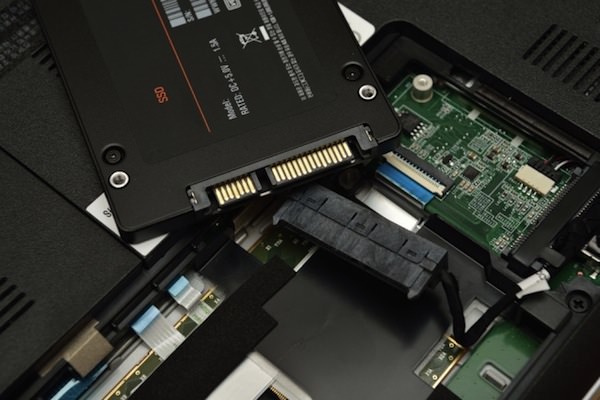An exchange of the notebook hard drive is well worth the SSD drives are more robust and faster responsive. Meanwhile, a variety of cheaper models available.
Whereas a conventional hard drive stores data on rotating magnetic disk, an SSD works with permanently installed flash memory chips. This technique ensures that you can quickly access the stored data. During data transmission, the drive compared to the hard drive also in the lead.
A further advantage is its resistance. As opposed to hard disks that are made up of many moving parts such as a magnetic disk and a read-write head, an SSD is more robust due to their structure. In addition, an SSD operates quietly. Interesting is the use of SSDs in notebooks and other mobile devices, especially the fact that their power consumption is very low.
Laptop with SSD upgrade: Select the correct drive. Consider when choosing an SSD for your notebook the size and height of the old drive. On most laptops, 2.5-inch hard drives are used in some netbooks have hard drives in 1.8-inch format installed. This notebook also has an e-SATA interface feature. When selecting the memory capacity are based on the best use of your habits in relation with the price you want to pay: Smaller models with 128 GB. cost about $100, medium drives with 250 GB. to $200. Drives with capacities from 500 GB. are priced between $300 and $500.
Replace hard disk SSD. The installation of an SSD, you can make a rule without knowledge itself. First, you should perform a full backup of your old hard drive to an external storage. Unplug the computer from the power outlet and then remove the battery for safety reasons also. On most laptops, the hard drive is located behind a plastic cover on the back or on the side of the device. Remove the cover secured with screws and carefully remove the hard drive. Then slide the SSD into the drive bay and secure the cover.
Simple installation on Windows 8 and 7. If your notebook two drive bays, you can use the new SSD parallel to the disk. In this case, a backup on an external hard disk is not necessary. After you have installed the SSD, see the operating systems Windows 7, and 8 the drive and automatically start the setup.
For Windows XP or Vista, this process is somewhat more complicated. If you do not want to play on the new SSD your old operating system, you must save before an image ( ” image ” ) of the hard disk to an external disk. For this, use a disk tool like Parted Magic or Acronis True Image. After installing the SSD to transfer that image back to the SSD.

